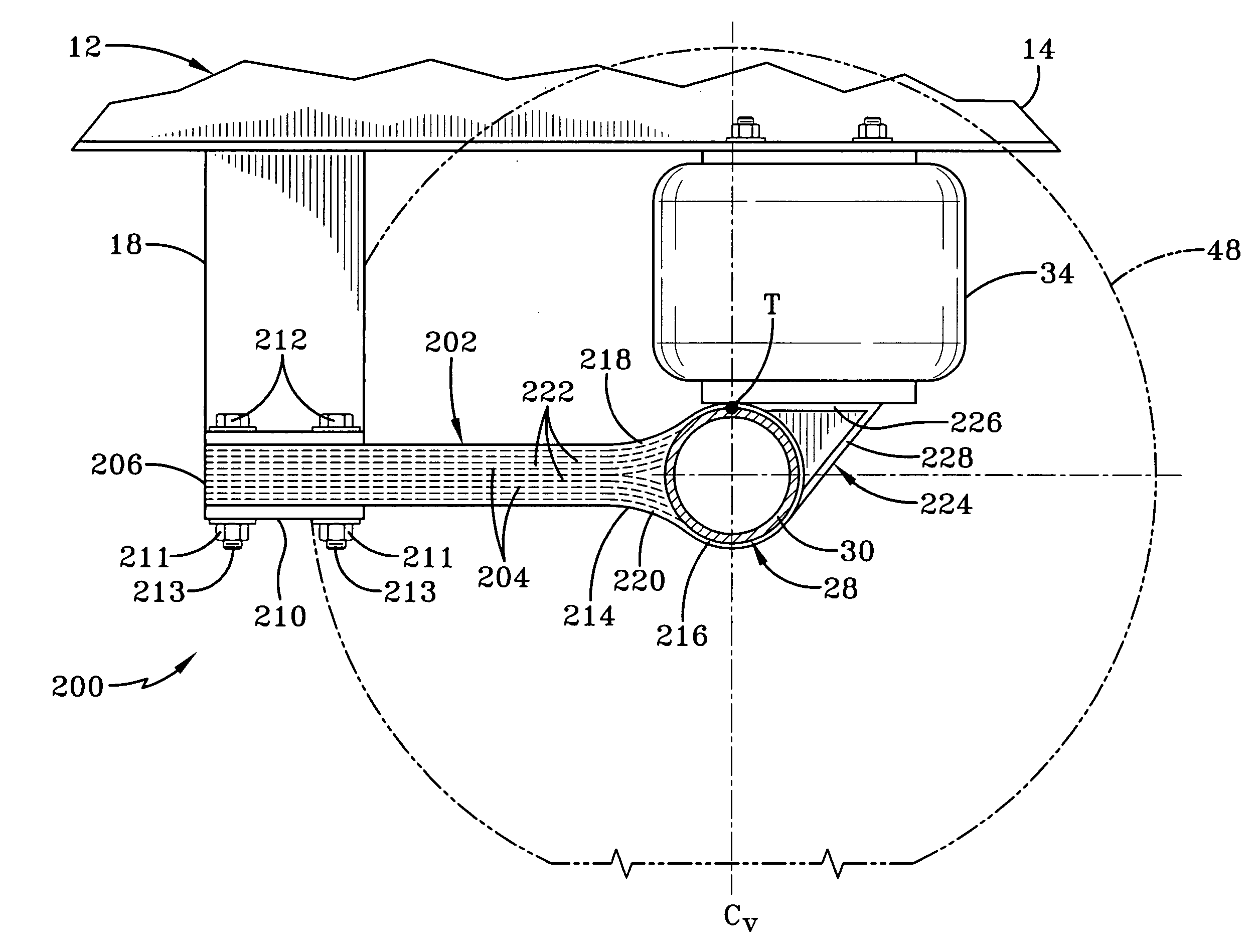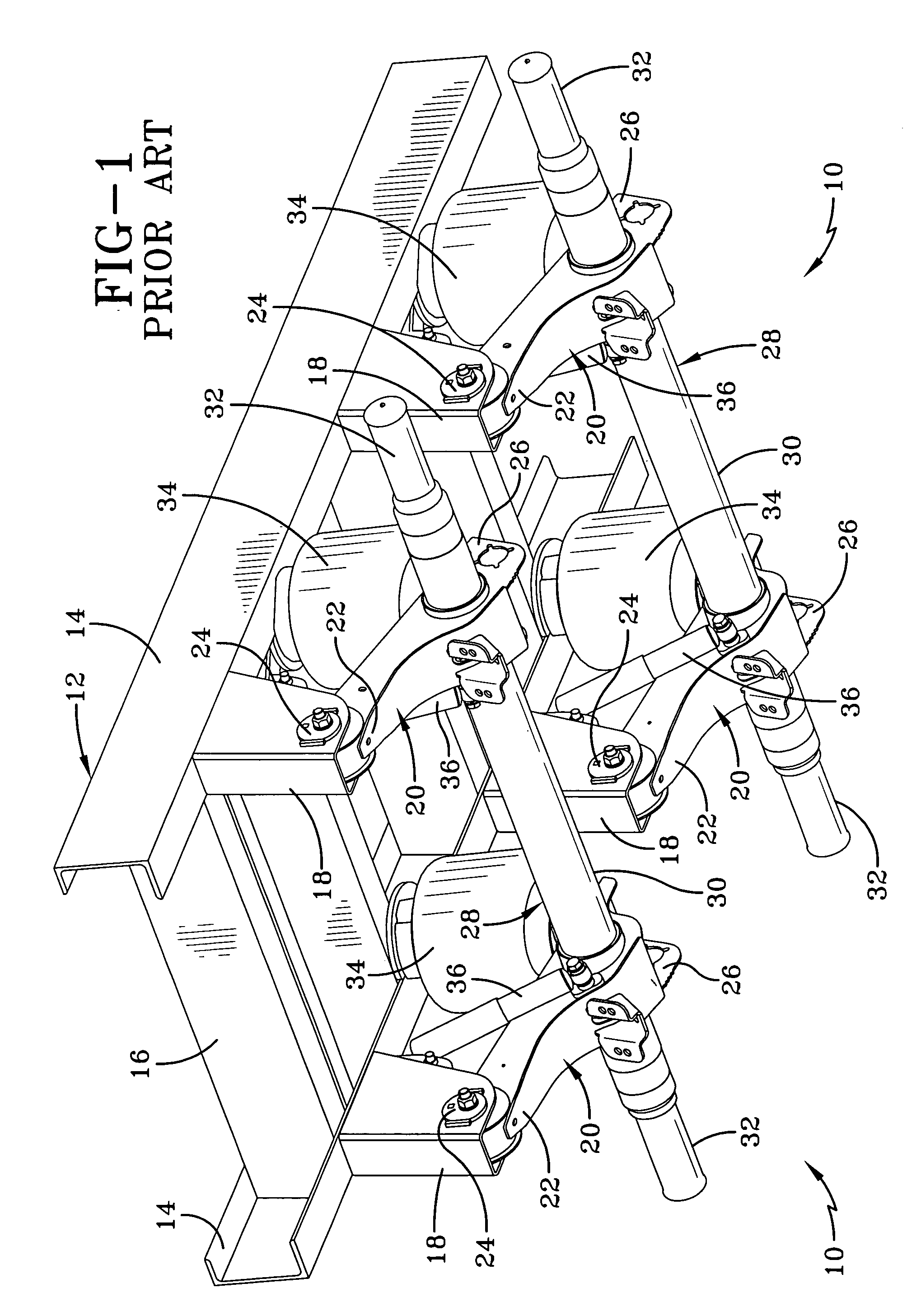Heavy-duty vehicle axle/suspension system
a suspension system and heavy-duty technology, applied in the direction of resilient suspension, interconnection system, vehicle spring, etc., can solve the problems of unfavorable axle/suspension system, unfavorable axle/suspension system, and undesired trailer removal, etc., to achieve cost-effective effects
- Summary
- Abstract
- Description
- Claims
- Application Information
AI Technical Summary
Benefits of technology
Problems solved by technology
Method used
Image
Examples
first embodiment
[0064] With particular reference to FIG. 6, first embodiment axle / suspension system 200 includes a beam 202 that includes a plurality of fiber-reinforced composite mats 204. For example, beam 202 preferably includes from about three to twenty mats, which are stacked horizontally to form an integral beam structure. Mats 204 are engineered to meet application-specific design requirements, such as spring rate and strength, as known to those skilled in the art of composite design. Mats 204 include a reinforcing material, such as glass fibers, carbon fibers, or other known reinforcing materials, which are resistant to tensile stretching. The fibers are dispersed in a polymeric or metallic matrix that is generally flexible, as known in the art of composite material design. Preferably, the fibers generally are more dimensionally stable than the matrix, which contributes to the advantages of beam 202, which are described in detail below.
[0065] Beam 202 preferably has a substantially constan...
second embodiment
[0085] With particular reference to FIGS. 10 and 11, second embodiment axle / suspension system 320 preferably includes a pair of longitudinally-extending, transversely-spaced parallel beams 322, each of which is generally rigidly attached to a respective one of a transversely-spaced pair of hangers 18 and extends rearwardly therefrom to immovably capture axle 28, as will be described in greater detail below. It should be noted that, while hanger 18 is sometimes considered to be part of the vehicle frame or subframe once it is connected to members of the frame or subframe, as described above, the hanger is typically engineered as part of axle / suspension system 320.
[0086] Each beam 322 preferably is formed of a fiber-reinforced composite, and is engineered to meet application-specific design requirements, such as spring rate and strength, as known to those skilled in the art of composite design. Each beam 322 includes a reinforcing material, such as glass fibers, carbon fibers, or othe...
PUM
 Login to View More
Login to View More Abstract
Description
Claims
Application Information
 Login to View More
Login to View More - R&D
- Intellectual Property
- Life Sciences
- Materials
- Tech Scout
- Unparalleled Data Quality
- Higher Quality Content
- 60% Fewer Hallucinations
Browse by: Latest US Patents, China's latest patents, Technical Efficacy Thesaurus, Application Domain, Technology Topic, Popular Technical Reports.
© 2025 PatSnap. All rights reserved.Legal|Privacy policy|Modern Slavery Act Transparency Statement|Sitemap|About US| Contact US: help@patsnap.com



